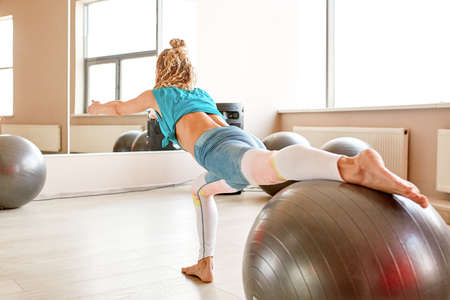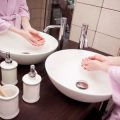1. Understanding Fall Risks in the Home
Falls are a leading cause of injury among older adults in the United States, and many of these accidents happen right at home. It’s important to understand why falls occur and which parts of the home are most risky, so families can make effective changes to help prevent them.
Common Causes of Falls Among Older Adults
There are several reasons why older adults are more likely to fall. Some of the most common causes include:
| Cause | Description |
|---|---|
| Poor Lighting | Dim or uneven lighting makes it hard to see obstacles or changes in floor level. |
| Cluttered Walkways | Objects left on floors, like shoes or cords, create tripping hazards. |
| Loose Rugs & Carpets | Mats that slide or bunch up can cause someone to slip or trip. |
| Lack of Handrails | No support on stairs or in bathrooms makes balance difficult. |
| Slippery Surfaces | Wet bathroom floors, kitchen spills, and polished surfaces increase slip risk. |
| Poor Footwear | Shoes without good grip or support make falls more likely. |
High-Risk Areas Inside the American Home
Certain spots in American homes are known for being accident-prone for seniors. Knowing these areas helps families prioritize safety improvements.
| Area of Home | Why Its Risky |
|---|---|
| Stairways | Lack of sturdy handrails and inconsistent step heights can lead to missteps. |
| Bathrooms | Water on tile floors and no grab bars make slipping common here. |
| Kitchens | Spilled liquids, cluttered floors, and reaching for high shelves increase risks. |
| Bedrooms | Poor lighting at night and rugs by the bed may cause trips when getting up. |
| Living Rooms | Cords, coffee tables, and low furniture are easy to trip over. |
| Entryways & Hallways | Shoes, bags, or lack of lighting near doors can be dangerous. |
Key Takeaway
Understanding where and why falls happen is the first step in making your home safer. By identifying these risks, you can start making simple yet effective changes to protect yourself or your loved ones from unnecessary injuries.
Improving Lighting and Visibility
Good lighting is one of the most effective ways to reduce fall risks for older adults at home. Dim or uneven lighting can make it hard to spot steps, cords, or small objects that could cause trips and falls. By focusing on key areas like stairways, hallways, and bathrooms, you can make a big difference in safety and confidence.
Why Adequate Lighting Matters
Many falls happen simply because someone couldn’t see an obstacle or change in floor level. As we age, our eyes need more light to see clearly. Proper lighting helps older adults move around safely, especially at night or in areas with shadows.
Key Areas to Improve Lighting
| Area | Common Hazards | Recommended Lighting Solutions |
|---|---|---|
| Stairways | Poor visibility of steps; shadows hiding edges | Install bright LED overhead lights; add motion-sensor step lights or strip lighting along stair treads |
| Hallways | Dark sections, especially at night | Use plug-in nightlights or motion-activated wall sconces; keep switches at both ends of the hallway |
| Bathrooms | Low light during nighttime visits increases risk of slips | Add stick-on battery-powered lights near toilets and sinks; use illuminated light switches; install brighter bulbs in fixtures |
| Bedrooms | Trouble seeing when getting up at night | Place touch lamps or smart bulbs by the bed; use path lights leading to bathroom door |
| Kitchens & Entryways | Shadows over workspaces; cluttered entry points | Add under-cabinet lighting; overhead LED panels for even coverage; motion-activated porch lights outdoors |
Popular U.S. Lighting Solutions for Fall Prevention
- LED Bulbs: Bright, energy-efficient, and long-lasting. Choose daylight or soft white tones for clarity without harsh glare.
- Motion Sensor Lights: Ideal for hallways, bathrooms, and staircases. They turn on automatically when someone enters the area.
- Smart Lighting Systems: Brands like Philips Hue or LIFX let you control brightness and timing from a smartphone or voice assistant.
- Plug-In Nightlights: Affordable and easy to install in outlets throughout the home—many models have dusk-to-dawn sensors.
- Batteries Operated Stick-On Lights: Perfect for closets, cabinets, or dark corners where wiring isn’t available.
Actionable Tips to Enhance Visibility at Home
- Replace old bulbs with higher-lumen (brighter) options where needed.
- Curtains or blinds should allow maximum natural light during the day.
- Arrange furniture to avoid blocking windows or light fixtures.
- Add contrasting tape or paint on step edges for extra visibility.
- Create clear paths free of clutter so light reaches all areas.
- If possible, ask a family member or friend to help check your lighting setup from their perspective—they might notice trouble spots you missed!
![]()
3. Bathroom Safety Modifications
The bathroom is one of the most hazardous places for older adults in the United States, with wet and slippery surfaces increasing the risk of falls. Making a few key modifications can make a big difference in keeping seniors safe and independent at home. Here are some practical strategies to consider:
Essential Bathroom Safety Features
| Modification | How It Helps Prevent Falls |
|---|---|
| Grab Bars | Provide stable support when getting in and out of the shower or bathtub, and near the toilet. |
| Non-Slip Mats | Add traction in the shower, tub, and on bathroom floors to prevent slipping on wet surfaces. |
| Walk-In Tubs | Reduce the need to step over high tub walls, making bathing safer and more accessible. |
| Raised Toilet Seats | Make it easier to sit down and stand up without losing balance, especially for those with limited mobility. |
Additional Tips for Bathroom Safety
- Keep the bathroom well-lit with night lights for better visibility at all times.
- Store frequently used items within easy reach to avoid stretching or bending.
- Consider installing a hand-held shower head for more control while bathing.
- If possible, use a sturdy shower chair or bench for added stability during showers.
Why These Changes Matter
Falls in the bathroom can lead to serious injuries for older adults. By adding these safety features, you create a safer environment that supports independence and peace of mind. Even small changes like non-slip mats or grab bars can have a significant impact on daily safety for seniors living at home.
4. Flooring and Clutter Management
Falls often happen at home because of unsafe flooring or cluttered spaces. By making a few changes, you can make your home much safer for older adults. Here are some practical tips to help prevent trips and slips.
Securing Rugs
Area rugs and runners are a common tripping hazard in many homes. To keep them from moving or curling up at the edges, use these best practices:
| Problem | Solution |
|---|---|
| Rug slips on hard floors | Use non-slip rug pads or double-sided carpet tape underneath |
| Corners curl up | Secure corners with rug grippers or adhesive strips |
| Rug is too thick/high pile | Choose low-pile, flat rugs for easier walking and rolling mobility aids |
Choosing Slip-Resistant Flooring
The right flooring can reduce the risk of falls significantly. Consider these materials when updating your home:
- Vinyl: Soft underfoot and available in slip-resistant finishes.
- Cork: Cushioned and less likely to cause injury if someone does fall.
- Textured tiles: Offer grip, but avoid highly polished surfaces which can be slippery when wet.
- Carpet: Low-pile carpet provides traction but should be tightly secured to avoid bunching.
Organizing Commonly Used Spaces
A clutter-free space makes it easier to move around and reduces the risk of accidents. Here are some simple organization tips:
- Keep walkways clear by removing unnecessary furniture and items from hallways and entryways.
- Use storage bins or baskets to organize shoes, magazines, and other loose items that tend to accumulate on the floor.
- If cords or wires run across pathways, secure them along walls using cord covers or clips.
- Make sure frequently used items are within easy reach to avoid using step stools or overreaching.
Quick Tips for Everyday Safety
- Do a quick daily check for new clutter in main walking areas.
- Add nightlights in bedrooms, bathrooms, and hallways to help see obstacles after dark.
- If mobility devices are used, ensure pathways are wide enough for safe movement.
5. Stairway and Entryway Adjustments
Stairways and entryways are common spots where older adults can trip or fall, especially in many U.S. single-family homes. Making a few smart changes can make these areas much safer and easier to use every day.
Add Handrails for Better Support
Handrails provide stability and support when climbing up or down stairs. It’s important to have sturdy handrails on both sides of any staircase, inside and outside the home. Make sure they are at a comfortable height (34-38 inches from the stair nosing) and easy to grip.
Recommended Handrail Features
| Feature | Benefit |
|---|---|
| Both Sides of Stairs | Extra support for either hand |
| Non-slip Material | Safer grip, especially if hands are wet |
| Continuous Length | No gaps that could break support while moving |
Install Ramps for Easier Access
If steps at entrances or between rooms are hard to manage, consider adding ramps. Portable or permanent ramps help wheelchairs, walkers, or people with limited mobility move safely into and out of the house. Choose ramps with a gentle slope (1 inch rise per 12 inches length is standard in the U.S.) and non-slip surfaces.
Use Contrasting Tape and Lighting for Visibility
Falls often happen because it’s hard to see where each step begins or ends. Placing brightly colored, contrasting tape on the edges of stairs makes them easier to spot. Also, make sure stairways and entryways have enough lighting, including night lights for late-night trips.
Simple Visibility Upgrades
| Modification | Description |
|---|---|
| Contrasting Tape on Steps | Makes each step edge stand out clearly |
| Motion Sensor Lights | Automatically turns on when someone approaches stairs or entries |
| Nonslip Treads or Mats | Adds traction to prevent slips on wood or tile steps |
Check Door Thresholds and Entry Rugs
Many U.S. homes have raised door thresholds that can be easy to trip over. Lower these thresholds where possible, or use beveled edge transitions. Secure any entry rugs with non-skid backing or remove them completely to avoid tripping hazards.
Tip: Regularly inspect stairs and entryways for loose boards, cracked steps, or worn-out mats—fix problems right away to keep things safe!
Making these stairway and entryway adjustments helps create a safer home environment, giving older adults more confidence as they move around their house.


